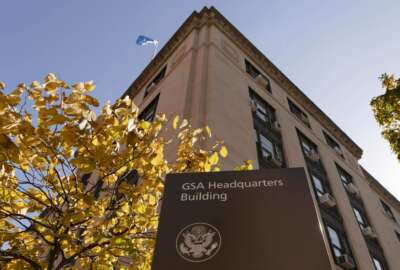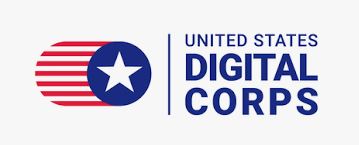HUD leaders aim to improve engagement by responding to employee feedback
The Department of Housing and Urban Development works with affinity groups and holds listening sessions to develop leadership and improve employee engagement.
The Department of Housing and Urban Development is one of many agencies strategizing how to improve internal federal leadership.
Part of that improvement for HUD involves increasing diversity, equity, inclusion and accessibility in leadership roles, as a way to better serve both the agency’s employees and the public.
At HUD, women comprise 54% of the agency’s leadership roles, compared with 36% governmentwide. But Deputy Secretary Adrianne Todman told Federal News Network the agency is still pushing to do more to improve leadership diversity.
“We have a team of leaders that every day are actively thinking about, ‘how can we be more inclusive? How can we make sure that we have equity not just tied to gender, but also disability [and] the full class of folks who struggle sometimes to feel included, not just in their homes, but in their workplace?” Todman said in an interview with Federal News Network.
Building a more diverse leadership is part of the goal to improve employee engagement in the federal workforce – a factor that dropped for many agencies in the results of the 2021 Federal Employee Viewpoint Survey. Although Todman said HUD’s score for FEVS improved since 2020, the agency continuously moves around its internal resources to build on engagement and retention.
“We deploy our ability to reassign executives inside of the department when we see those needs, and just grooming from the inside. [HUD uses] intentionality [and] our mission to really attract the talent that we want to have, keep that talent, nurture that talent and make sure that people feel they have a place to grow and learn,” Todman said at a Partnership for Public Service event on June 8.
Through listening sessions and responding to employee feedback from surveys, HUD leaders use employee engagement as a way to hone their management skills.
For example, Todman said employees shared concerns about wellness while working from home. In response, the agency created a portal for employees to access wellness information and gave workers more flexibility to take breaks during the day when needed.
“Those levels of listening, added engagement and then acting on it, is something that we think should be replicated across the government,” Todman said.
Todman added that HUD is prioritizing employee retention, after the pandemic negatively impacted staffing at the agency. By working with affinity groups and encouraging employees to take on leadership roles, Todman said she hopes to keep more employees at HUD for the long haul.
“We work really closely with our affinity groups inside the department as ways to understand where people want to grow,” Todman said. “Between working with people at their affinity groups [and] making sure that people understand that the federal government and HUD is a place they want to stay, we’re hoping that we can encourage more folks into leadership.”
Todman said overall, clarity is key.
“If you’re able to speak plainly and in a way that folks understand what you’re actually trying to achieve, and not hide behind programs and rules, that I found to be something that really pushes the envelope and allows leaders to really get there,” she said at the Partnership event. “Not only will your followers follow, but the other leaders in the room will realize and understand what you’re really trying to achieve and not hide behind other types of government gimmicks.”
For another agency, NASA, leadership and employee engagement consistently receive strong scores in FEVS and other federal surveys. The agency also topped the charts for the Partnership for Public Service’s Best Places to Work in the federal government last year.
Former NASA Administrator Charles Bolden said at a Partnership event that he credits strong employee engagement with encouraging workers to take risks.
“We encourage people – not to try to fail, but to take risks and understand that if we’re not taking risks, and we’re not failing, we’re not really trying hard,” Bolden said at the event. “We know that if we’re going to continue to advance, we’ve got to take bigger risks than everybody else. And we’ve got to be willing to accept those and turn them around and make them into good things.”
Bolden added that it’s the responsibility of agency leadership to encourage employees to continue pushing, even at times when they haven’t yet been successful.
“You’ve got to demonstrate that when they fail, you’re behind them, and you’re going to back them up,” Bolden said.
NASA and HUD exemplify the type of workforce development that the Partnership for Public Service is working to implement at more federal agencies. The nonprofit launched a new leadership institute focused on improving federal leadership on June 8.
The institute offers courses and training sessions in federal leadership. Agency senior leaders can also use the Partnership’s leadership model to assess their progress in different areas. The model hinges on four main factors: becoming self-aware, engaging others, leading change and achieving results.
The institute is part of the Partnership’s long-term efforts to develop federal leaders. The institute will offer learning opportunities for leaders at all levels, including supervisors, senior executives and political appointees.
At the institute launch event, Department of Homeland Security Deputy Secretary John Tien said good leaders should always focus on improving and building their management skills.
“You are always a student,” Tien said. “You can never be complacent in your own leadership development and your own public service development.”
Copyright © 2024 Federal News Network. All rights reserved. This website is not intended for users located within the European Economic Area.
Drew Friedman is a workforce, pay and benefits reporter for Federal News Network.
Follow @dfriedmanWFED






